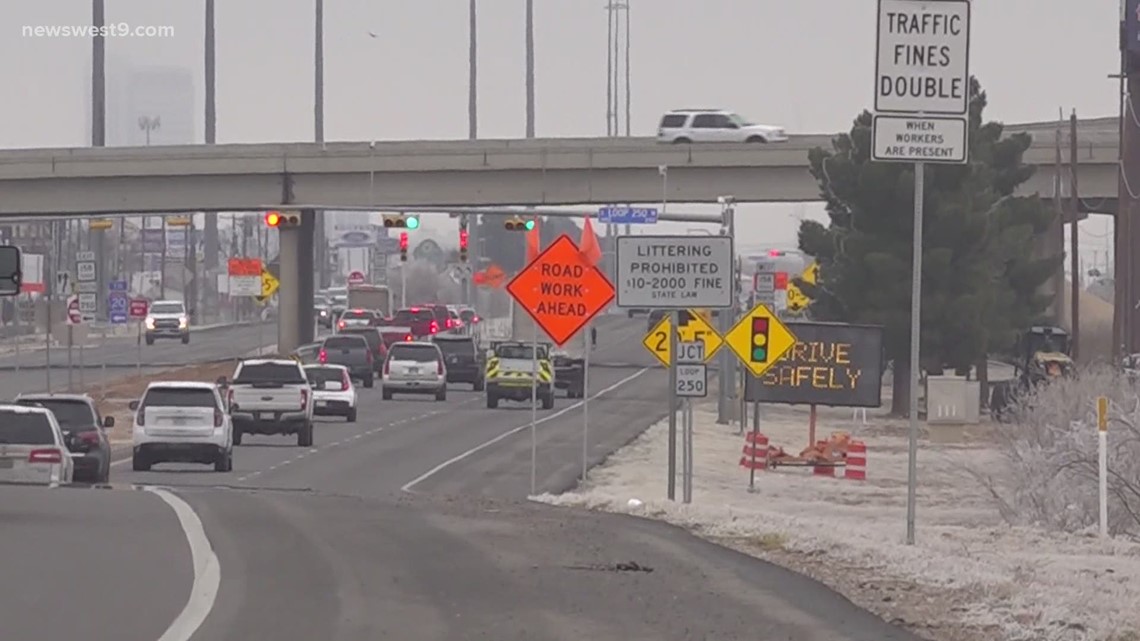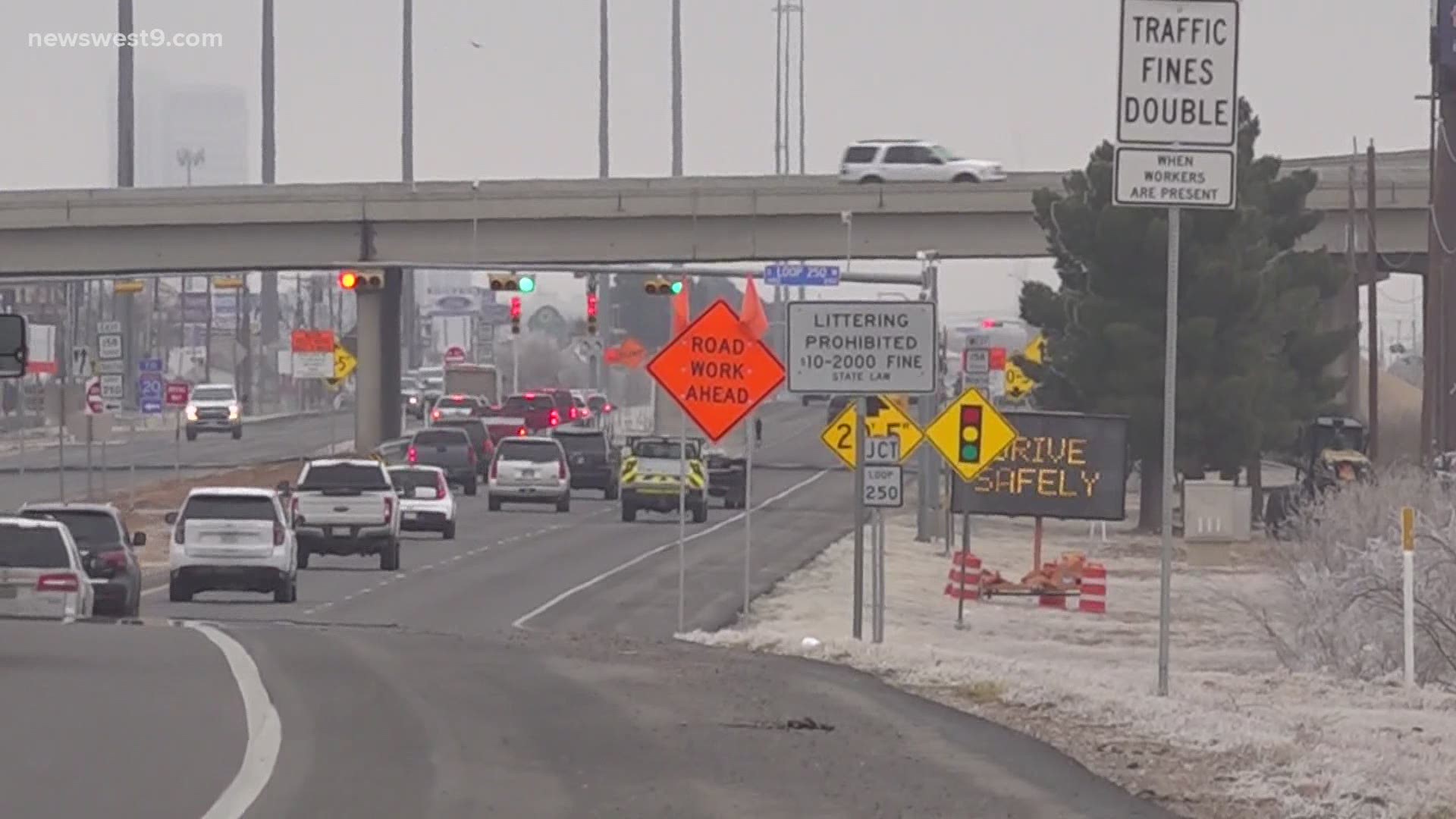MIDLAND, Texas — Road conditions during the day aren't always an issue when winter weather first arrives. It's at night when the temperature drops and the traffic decreases that slick roads can become a problem.
"Overnight when temperatures drop and traffic drops, you know some of that standing water will freeze again, and that’s when it really becomes a problem," Gene Powell, the Odessa district public information officer for TxDOT said.
There are other problems with this particular winter weather mix moving in over a large part of the state. There are fewer resources for this storm, meaning not every road can get treated.
"People need to act as if nothing has been treated because it only takes a square foot of ice to cause a crash, and we can't be everywhere. The cities and counties can't treat all their roads, and it's just a physical impossibility. There's too many miles of road, not enough equipment, not enough material, not enough manpower," Powell said.
This also means that outside help for road treatment is unlikely to make its way to the Permian Basin.


"It’s hard to move resources around when the whole state is facing basically the same scenario, then if anybody gets out and is involved in a crash God forbid, it can lock down an interstate or highway for hours as they try to clean the trash," Powell said.
There are some things to know if it's absolutely critical to be on the roads over the next few days.
"The number one thing is slow down. You can’t drive the speed limit. The speed limit is for optimal driving conditions. That’s not what we have. You need to slow down, you need to put a lot more distance between yourself and other vehicles because it’ll take more time to stop," Powell said.

